Shooting bows by remotely living Hadza boys and men is a daily, necessary affair. From the age of three, they start shooting bent sticks. As youngsters, they are soon required to contribute meat to the family. Through this early and regular training, they are usually skilled marksmen with these hunting tools. Due to their specific environment, a particular and peculiar bow-shooting style has emerged.
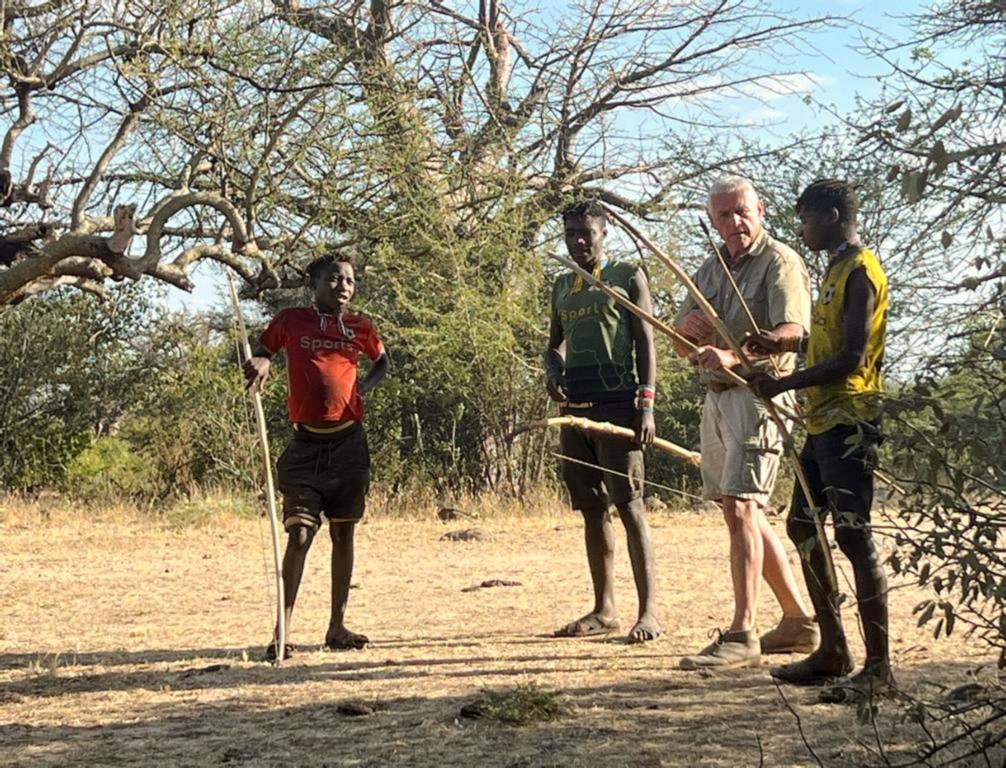
Ecological factors influencing the Hadza bow shooting style
Topography
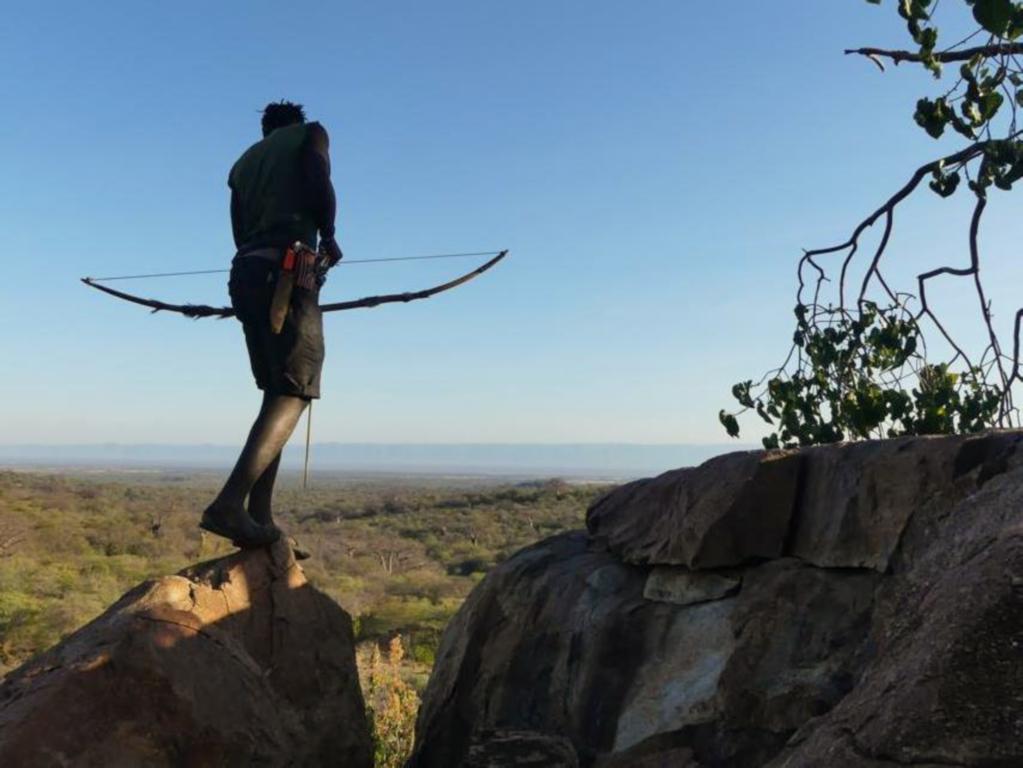
The topography in the Hadzabe area is primarily hilly and laced with rocky granite outcrops. Game animals must be stealthily approached by climbing over and under rocks and boulders. The rocks are not slippery, but often, both hands have to be used for climbing. Furthermore, often, the hunter has to crawl into slits or cracks under boulders.
Vegetation
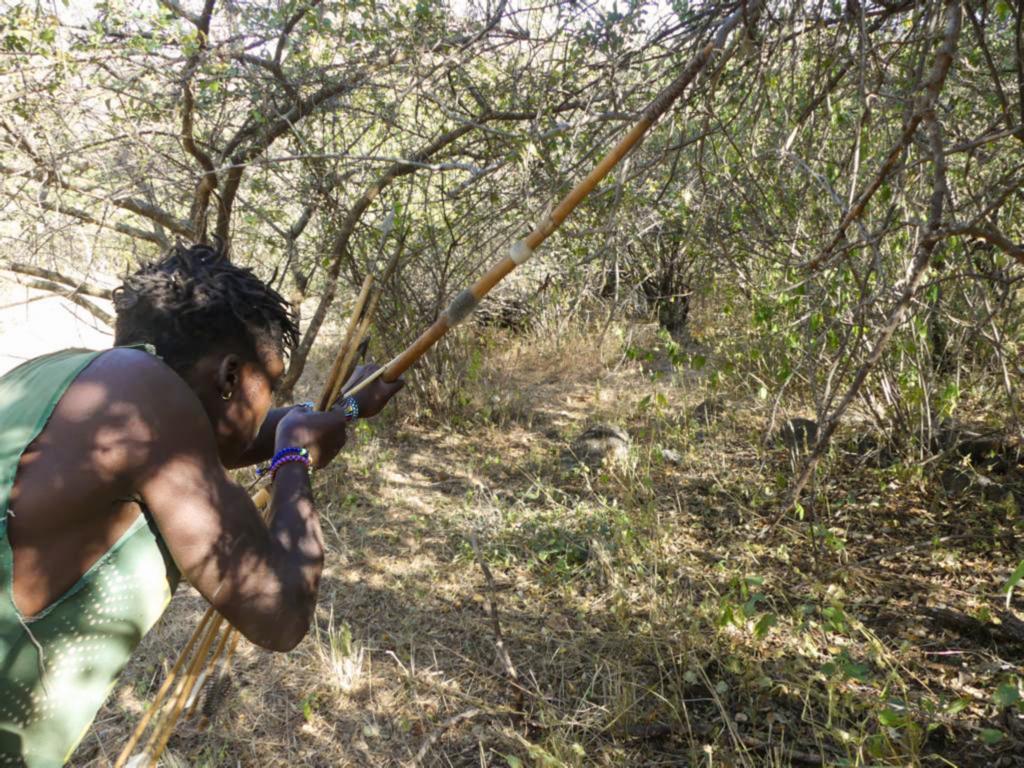
The biome is Acacia-Commiphora Woodland (ACW), densely vegetated with Vachelia spp., Senegalia spp., Commiphora africana, among others. Most of these shrubs- and tree species are thorny to various degrees. These thorns have continuously tried to be avoided when walking, but it happens regularly that the hunters are and were getting hooked.
Game animals
All mammals being hunted smell, hear, and see well. Furthermore, birds have keen eyesight.
Learnings from these ecological factors
- The legs must be closely kept together when shooting to stand on small rock boulders.
- Despite the small area on which the feet are standing, the body’s overall balance must be maintained during shooting.
- Quivers should not be used, as the content could rattle during climbing or crawling, and the arrows are unavailable in confined spaces. Also, the correct type of arrowhead for follow-up shots would not be readily available.
- A low brace height (distance between grip and string) is less prone to snagging in thorny vegetation.
The Hadza stance when shooting bows.
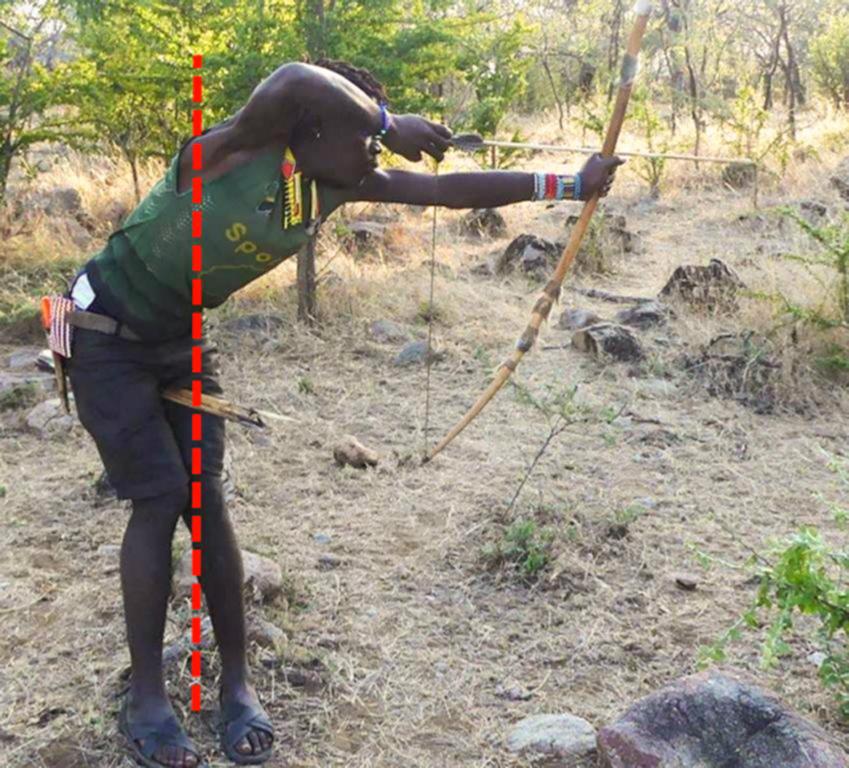
Due to the necessities of their environment, Hadza hunters keep their two legs and knees close together and distribute their body weight evenly along the axis of gravity. This way, the body weight is still in balance, and the impulse of the bow can be absorbed after releasing the arrow.
Holding the arrows when shooting
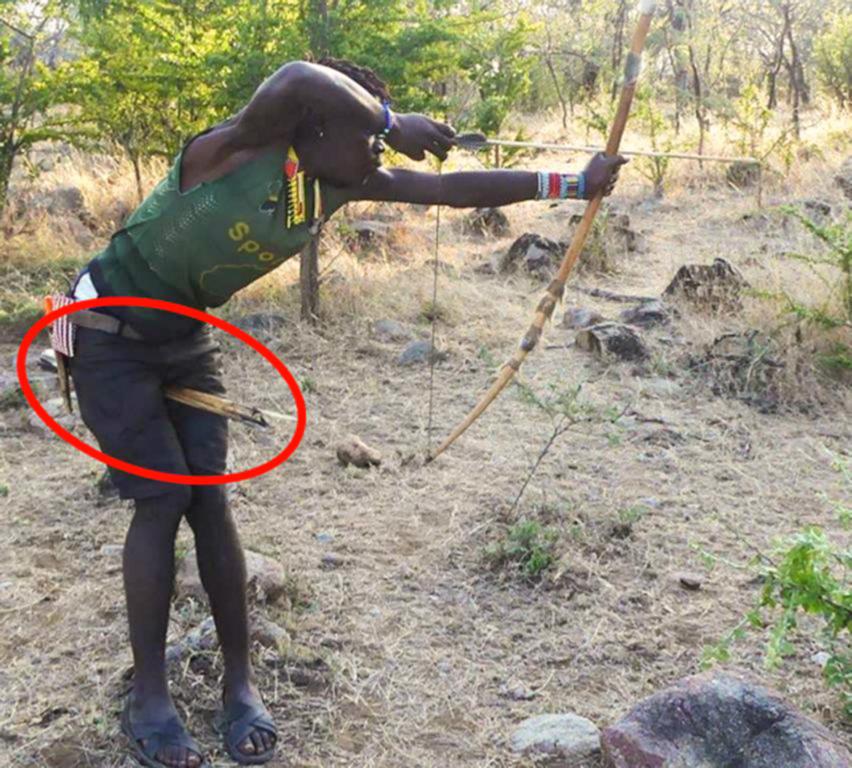
The arrows are preferably held in the crotch between the legs, with the arrowheads pointing forward.
In specific situations, Hadzabe people lay off the whole arrow bundle and creep forward toward the game with only the shooting arrow strung.
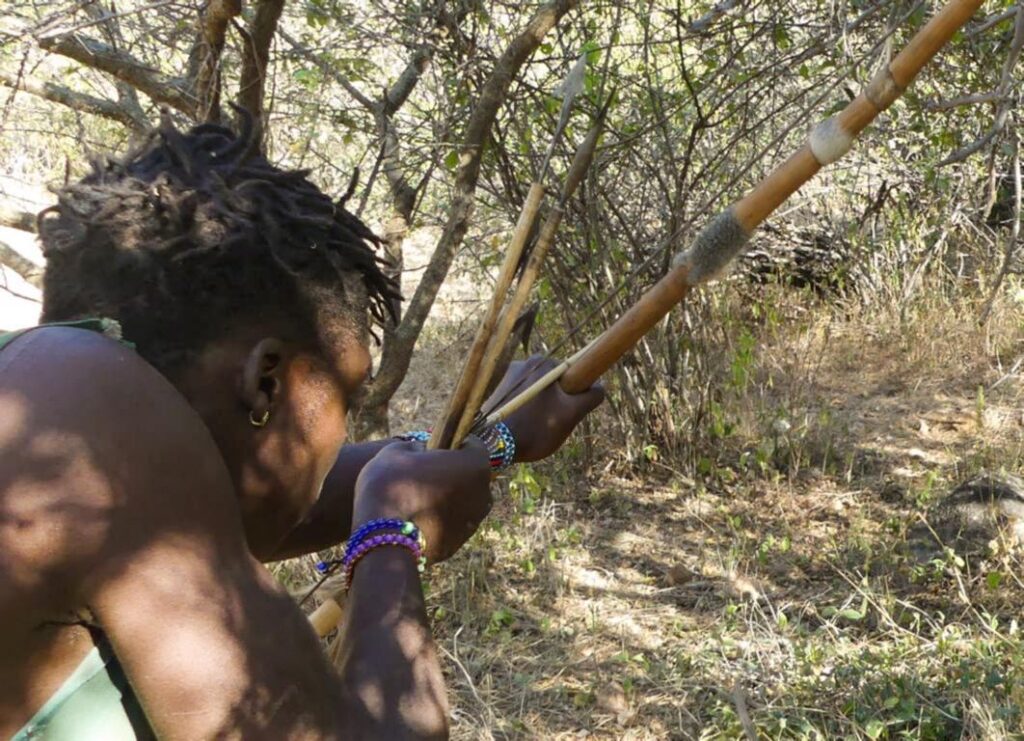
It also happens that the whole arrow bundle is held in the draw hand. On no occasion could it be seen that the arrow bundle was held in the bow hand when shooting, which would lead to rattling noises and spook the game.
How is aiming done?
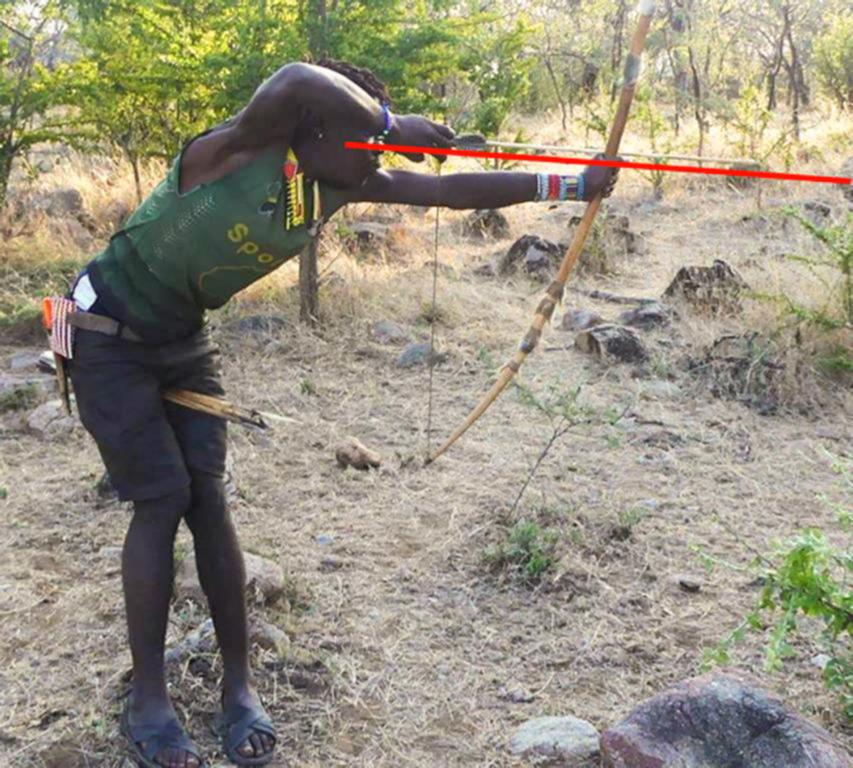
Hadzabe people use a variation of the gap-shooting method. They do not utilize an anchor point at their face or head but aim with their shooting eye right over the length of the whole arrow onto the target. Therefore, they hold the bow high and move the head down.
Other Hadzabe bow shooting details
When shooting, the bow is tilted to the right, and the arrow rests between the left side of the upper limb and the shooter’s fist. This results in an optimal sight- and flight picture. There is no bow grip per se, but the bow is always held at the balance point. A nocking point is neither marked nor physically there.
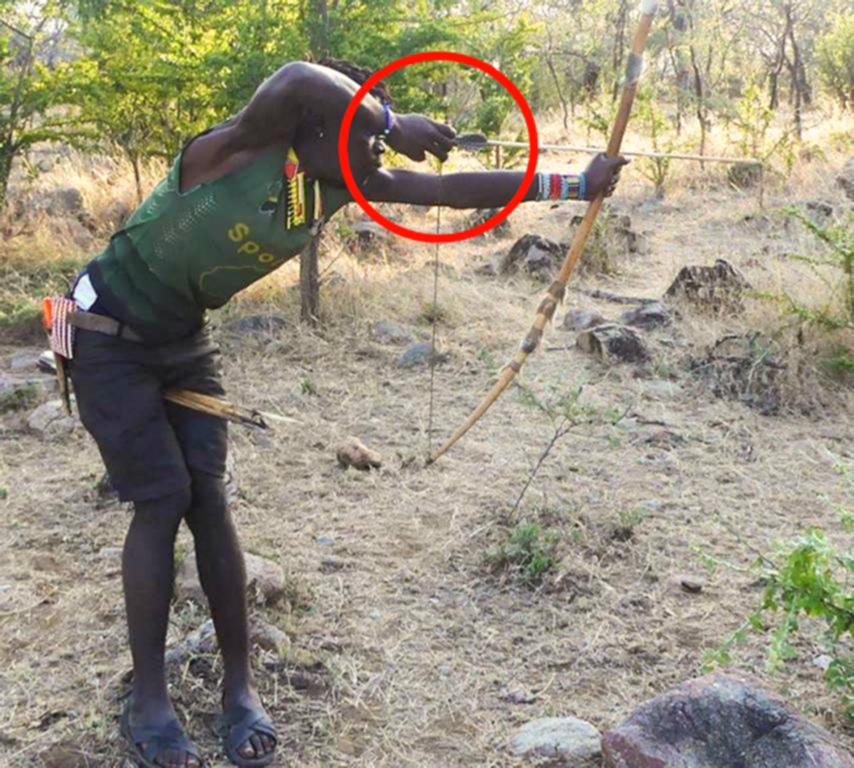
For drawing the bow, Hadzabe people use the three-finger Mediterranean draw grip, with the index finger above and the middle and ring fingers below the nock.
Although all these features on the bow are pretty primitive, it is remarkable how successful these bows are used for hunting and providing the clan with proteins.
Lessons learned about how Hadza people are shooting their bows:
- Hadza people use a peculiar stance when shooting their bows.
- They hold their arrow bundle tightly pressed between their legs when shooting.
- Aiming is done over the entire length of the arrows in a gap-shooting style.
- Drawing the bow is done with a 3-finger Mediterranean grip.
Additional information
My book ‘Hadzabe Survival Skills‘ offers more skills, knowledge, tools, and techniques for the Hadzabe people’s life in their natural environment. It is available on Amazon.com and Amazon’s regional websites.
.



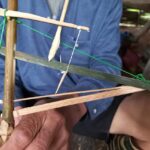
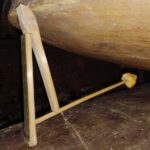
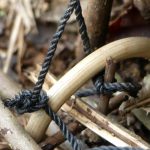
2 comments
Kurt Hoelzl
Sehr geehrter Herr Rodigas,
Es freut mich wirklich, solch eine positive Rückmeldung von Ihnen zu erhalten. Ich habe noch sehr viel Stoff für weitere Artikel (ca. 150!) über Details des Lebens in und aus der Natur von authentisch lebenden Naturvölkern (keine Touristen-Shows), welche ich noch beschreiben möchte bzw. werde. In ca. zwei Wochen von jetzt, werde ich ein Monat lang mit Aborigines in Western Australia verbringen und danach den folgenden Winter in Europa zum Schreiben von weiteren Artikeln dedizieren. Ich hoffe, Ihnen, bzw. den weiteren vielen Followern, noch weitere qualitativ hochwertige Informationen liefern zu können.
Bis später!
Kurt Hölzl
Andy Simon Rodigas
Ich finde diese Internetseite großartig. Ich bin leider nur durch Zufall sehr spät auf Ihre Arbeit aufmerksam geworden. Sie haben eine großartige Auffassungsgabe und können das Gesehene hervorragend wiedergeben. Eine wunderbare Internetseite, auf der es sehr viel zu lernen gibt. Vielen Dank für Ihre Arbeit.